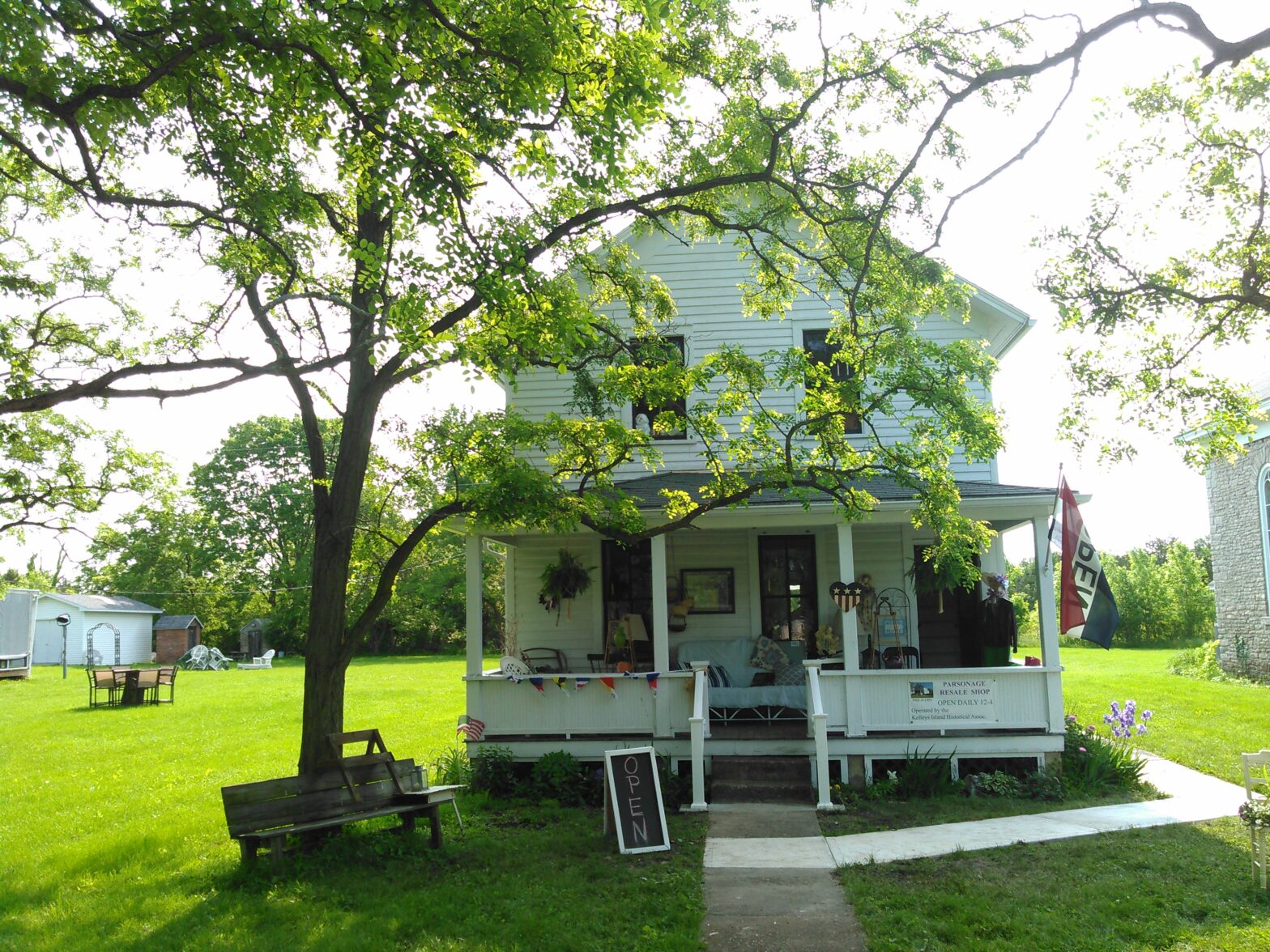THE HISTORY OF THE PARSONAGE HOUSE
The German Evangelical Reform Church was formally organized in October 1865. The parsonage, next door, was built in 1888, to fill the need for a residence for visiting ministers and later, a permanent minister. The land was purchased from Ann Twidney on August 13, 1888, for $51.00 for the .51 acre lot. The last official service in the church was the funeral for William Burger in 1942, who had served many years as Sunday School Superintendent.
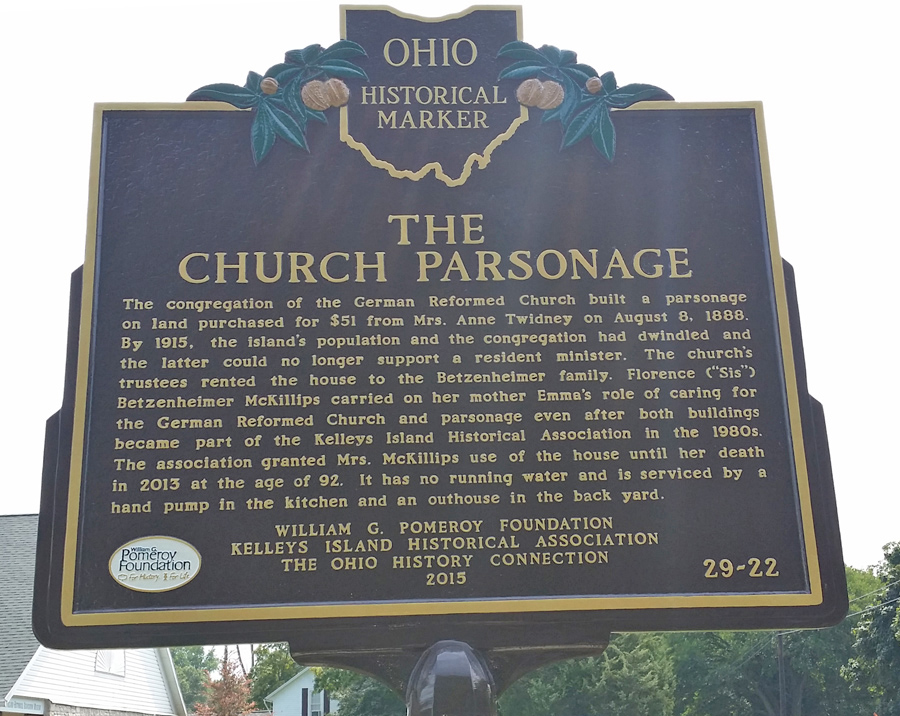
The Betzenheimer family lived at the parsonage house all their lives, until Sis Betzenheimer/McKillips moved out around 2010. After returning to the island in the 1940’s, Sis carried on the tradition of care and preservation of the Old Stone Church. Because of that commitment, she was granted life use of the house. That adds up to almost 90 years of Betzenheimer residency. The house consists of seven rooms; three bedrooms up and one down, living room, dining room, kitchen, cellar and porch. Truly amazing – it has a cistern to collect water but no plumbing. The kitchen sink has a hand pump and there is an outhouse in the rear of the church.
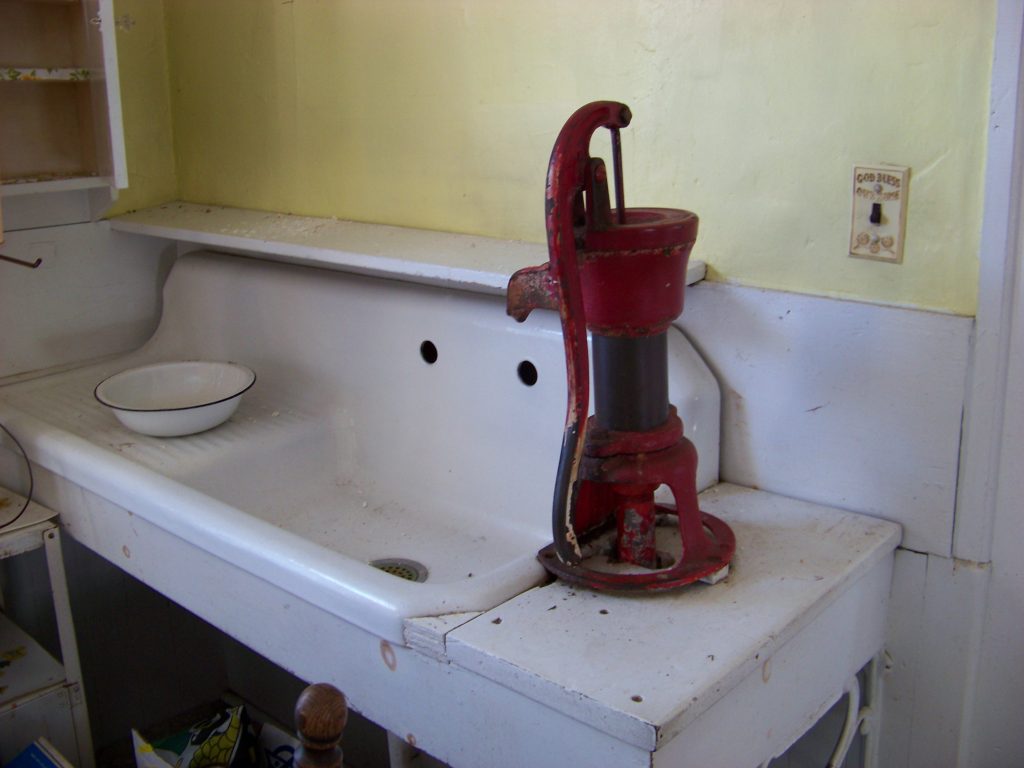
A Christmas Story – Read (below) how 7 year old Lee Maag lit the candles on the Christmas tree and almost burned down the house in 1919.
Life in the Parsonage – what was it really like? – Find out (below)
A PARSONAGE STORY – CHRISTMAS 1919 By June Campbell
With the passage of Prohibition in 1919, my Grandfather, William Maag, lost his job as Superintendent of the Vineyards for the Kelleys Island Wine Co. Included in his employment had been the company house at Carpenter’s Point, now owned by Dick and Paulette McMonigal. Grandma Minnie Maag did laundry and cleaning for the West End Club next door. One of the Club member told me of seeing her name in the log with instructions to “Call Mrs. Maag when you leave so she can clean and wash the sheets.”
Having six young children to feed and clothe, Will Maag needed a new job and was hired by the Village to be the Constable. New housing was also necessary, and the German Reformed Church parsonage was available. In 1919 they moved in, and Minnie did the janitorial work for the church. The older children worked together and mowed the grass for the two buildings.
Christmas 1919 found the family in the parsonage with their Christmas tree set up in the small room beside the dining room. The abundance of juniper trees in the island woods was where all islanders acquired their Christmas trees. It was decorated with a few precious glittery ornaments from Germany, home-made garlands of paper circles linked together and popcorn. A few real candles were carefully attached to the outer tips of the branches, and a Star of Bethlehem ornament placed on top. The candles were to be lit Christmas Eve after church services, but only for a couple of minutes and only when the parents lit them.
A few days before Christmas, Minnie was at a Ladies Aid Meeting at the Community Church on the corner, now Zion United Methodist. The oldest, Julia, age 12 and the next one, Oliver, age 10-1/2, were at their jobs helping other islanders. Lillian, age 9, was in charge of the other children, ages 7, 4 and 2, with strict instructions for chores to be accomplished for the hour they were alone.
Mischievous 7-yr old Lee, quietly slipped into the room and lit the candles. Within seconds the tree started to burn, and Lee yelled “Lilly, Help!” Lillian rushed in to see, told Lee to get the other kids out of the house, then ran for help. The next closest house was to the south, the Ed Bauman house, more currently Don Haas’, and Lillian told me many years later, “It was such a long way to run, and I thought I’d never get there.”
Baumans made the fire call. The fire apparatus was kept at the quarry and had to be hitched up to the horses. They quickly arrived at the scene. The damage at the house was minimal, the wallpaper in the corner burned, and the ceiling scorched.
My Grandma Minnie, the children’s mother, heard the alarm and hurried home in fear for her children. All were found except the 4-year old, Howard. Then he was spotted standing in the crowd across the street with his hands in his pockets and all wide-eyed at the excitement.
The Maag family lived in the parsonage for only a year. Then the diminished population didn’t have enough employment for a constable, so they moved to Sandusky in time for the children to start school. The Betzenheimer family moved in the next day.
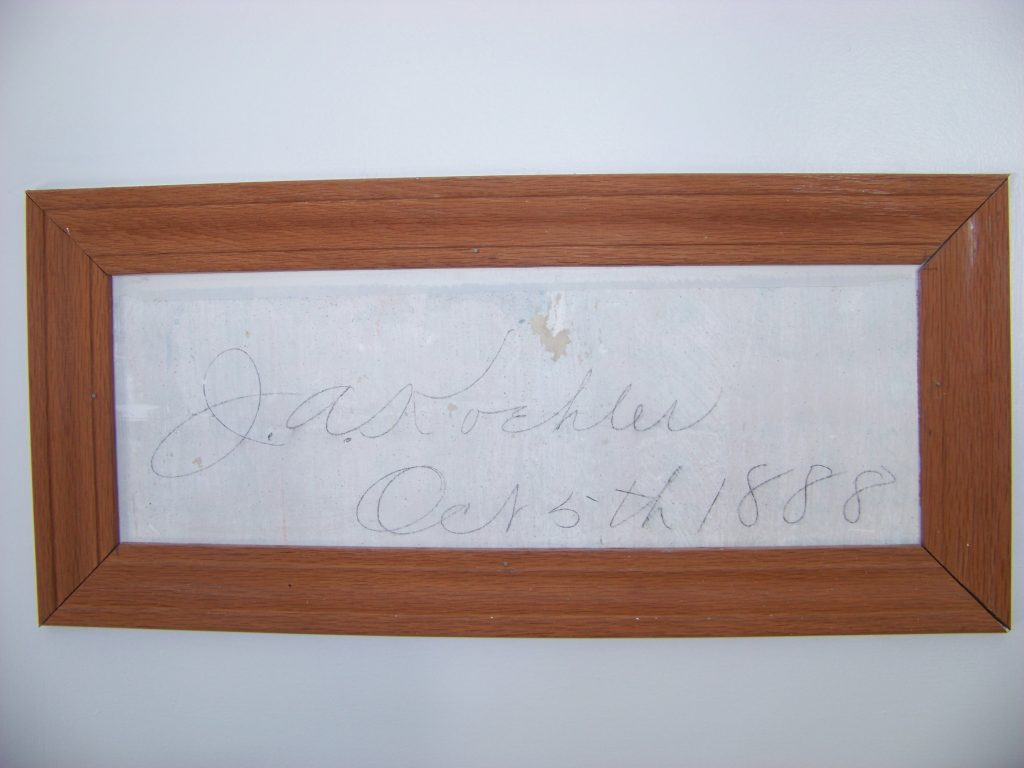
LIVING IN THE PARSONAGE HOUSE by Teri Behrends Since the parsonage was turned into a resale shop last year, we have had so many questions about what it was like to live in the house. Teri shares what life was like, living in the Parsonage. My grandparents rented the home from the German Reform Church after they were married, and my dad and his brothers and sister were born in the house. Grandma raised five children with no running water and an outhouse. Think about trying to potty train your children that way. The house has always had electric, but it has never had running water. There is a hand pump in the kitchen that pumped water from the cistern under the house. It was great in the summer when you had been outside playing or working, and you came in and got a glass of very cold water from the pump. However, in the winter that very cold water, was very cold. All the water had to be heated on the stove. For example, after dinner, water was heated to wash the dishes. There were two pans put on the kitchen table, one for washing, and one for rinsing.
There was a wringer washing machine and the water also had to be heated to wash the clothes. To empty the washer you put a hose out the window. In the summer the water was not wasted, but used to water the plants and garden. Clothes were put on a drying rack in the dining room by the stove to dry. To bathe, you also had to heat the water, take the hot pan of water into the pantry and bathe. In the summer, the boys enjoyed bathing in the quarry at the “cut” where girls were not allowed. Also with no water, there was no bathroom, and the outhouse in the winter was an extremely cold place. During the winter months there was a chamber pot that could be used so you didn’t have to go outside, but that had to be taken to the outhouse in the morning and cleaned.
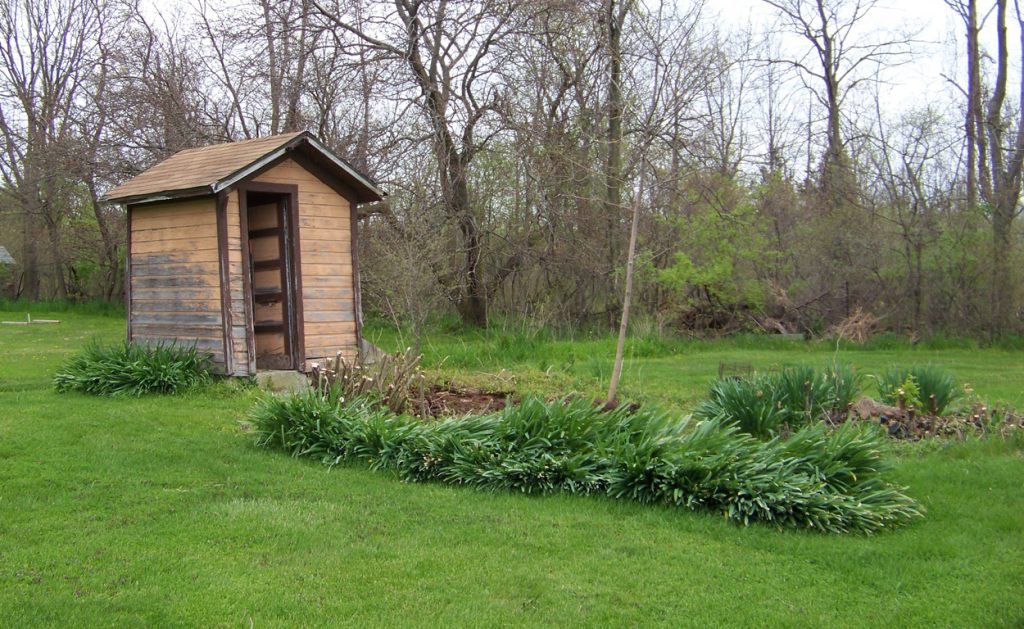
The house was heated by a fuel oil stove that sat in the dining room. There is no duct work, so that supplied the only heat. There was a register cut into the floor above the stove and that was how the upstairs received heat. One summer my grandmother fell and broke her leg while she was hanging clothes on the line to dry. They put her on the airplane and an ambulance met her in Sandusky at the airport to transport her to the hospital. It was the only time she was off Kelleys Island until she passed. She had many stories about her first airplane ride and her one trip to the “mainland.”
